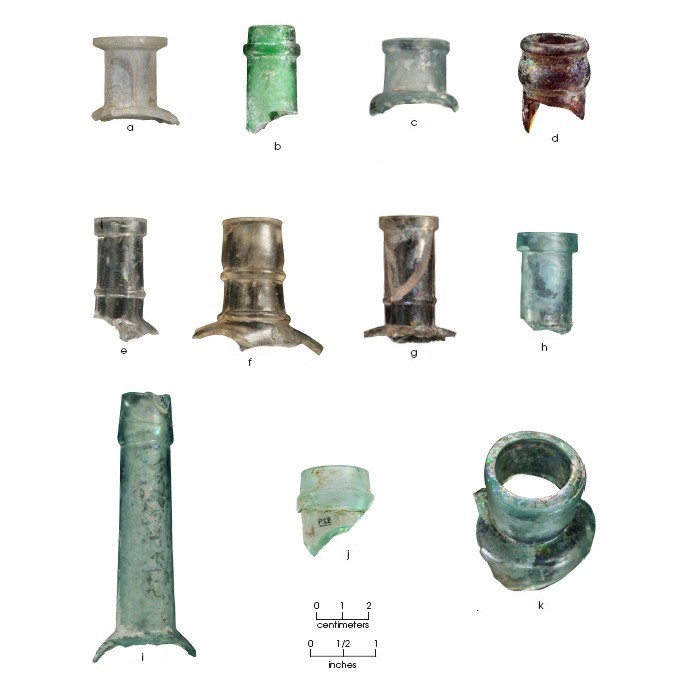
The necks are one of the most diagnostic parts of any glass container, and the mouth finishes of these specimens are particularly informative. The bottles shown here represent a variety of applied and hand-tooled lips from a variety of different medicine, alcohol, and food bottles. Of these, items (j) and (k) have applied lips, and all the others have tooled lips. All of these were blown by hand into bottle molds, but the difference is that the applied lips were added by using a blow pipe to string a bead of glass around the mouth, while tooled lips were finished using a special lipping tool that produced a more uniform finish. Applied lips were most commonly made from 1835 to 1885, but tooled lips gradually replaced applied lips between the mid 1870s and the mid 1890s.
The automatic bottle machine came into common use around 1904-1905, and by 1910 almost all bottles in the United States were machine made. Only three bottles in the farmstead assemblage (none illustrated here) were made on an automatic bottle machine. Additional markings on these bottles indicate they contained wine and date their manufacture after 1913 (2 bottles) and after 1954 (1 bottle). So all three of the wine bottles were deposited at the site many years after the Williams family moved off the property. One of the bottles was collected from a twentieth-century dump that is not associated with the Williams family, and the other two bottles were broken in along a rock wall in the corral complex, where they had probably been used as firearms targets.